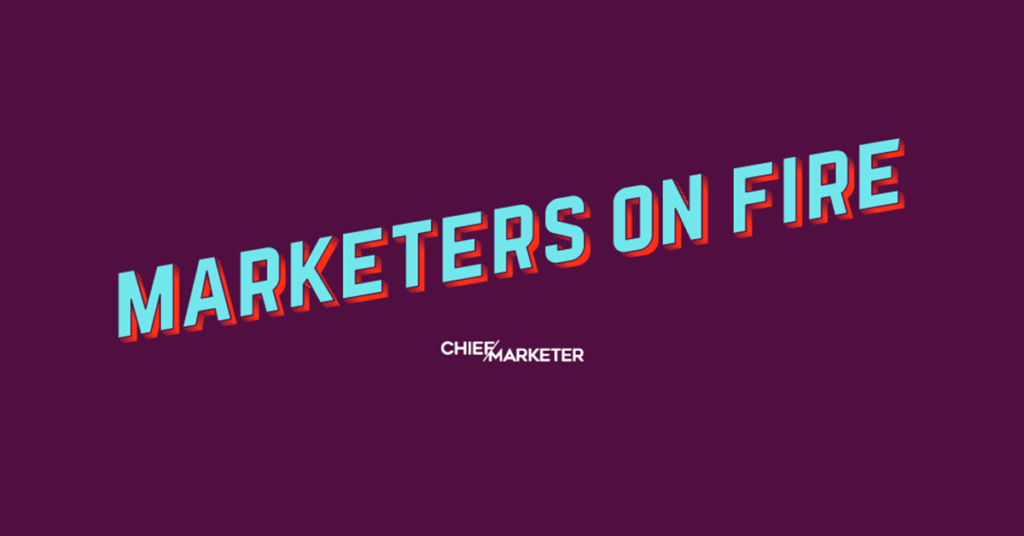Our monthly profile of an outstanding marketer whose leadership and campaigns are moving the needle for their brand.
—
Launching a brand is exceedingly complex. Add a pandemic, and the stakes are even higher. Resonating in the marketplace—one that’s been drastically altered by unforeseen events—is critical to any brand launch during this unprecedented time. “The longer this virtual world goes on, the more there is a need for data on how brands resonate in the market. Every marketer needs to think about B2B and B2C—regardless of the type of brand that you’re developing,” says Kristen Lauria, EVP and Global Chief Marketing Officer at Cigna.
We spoke with Lauria about the challenges of launching Cigna’s new health services brand, Evernorth, during the pandemic; the ways in which her data and analytics-fueled approach has shaped the brand’s strategy; and how the company has engaged B2B audiences in an era dictated by social distancing mandates.
Chief Marketer: Talk about Cigna’s new brand, Evernorth, and your vision behind it.
Kristen Lauria: Evernorth represents a brand and innovation platform that brings together the best of both companies, Cigna and Express Scripts. [It has] the work that we do already from pharmacy benefits management to pharmaceutical services, specialty care, but also the ability to create solutions that pull different elements across the business lines from behavioral services, and leveraging the data and the pharmacy benefits to create new solutions going forward.
The four categories underneath Evernorth are benefits management, pharmacy solutions, care and then an intelligence unit that’s going to build on the data and analytics that we have through our different units. [It’s about] understanding where the market’s going and feeding that back into more customized solutions for our clients.
CM: How is it different from the overarching Cigna brand?
KL: Cigna and Express Scripts combined in 2018. Cigna represents our core medical and health plan business. The Evernorth brand now pulls from Express Scripts and some of the things that were within Cigna provide the four areas of solutions that I described to not only Cigna as a health plan business, but to other health plans, employers and different parts of the market. So, it also serves health plans with pharmacy solutions, whereas Cigna has its own health plan offering across employers down to individuals and families and our government business.
CM: I’m assuming this launch was in the works prior to the pandemic?
KL: First and foremost, this is a step in the evolution of our strategy to drive more affordable, predictable and simple healthcare. The combination itself is the initiation of that strategy and the brand is a step along that way. It has been the works for a while in terms of what I think every marketer has to focus on right now: the data and the analytics and the research to understand what the depth of the brand is. How does it resonate with clients? What will it represent? A lot of work along those lines were in place—and also understanding what should be part of this brand and how will we go to market.
Now, that said, the pandemic happened. I actually joined Cigna right at the pandemic. And we did decide on the brand and its embodiment and what it will represent in the marketplace over the past six months. But the research and the depth of what the brand will represent and bring into the market has been in place for quite a while.
CM: Is there anything that’s changed because of the pandemic, in terms of what you were seeing in the marketplace and what’s needed?
KL: There are some things that we’ve had in place, but one topic has come up recently that I think is so relevant right now. We focus on what we call “whole person health,” or “total person health.” Topics range from not only the best way to get benefits but also loneliness, mental health, care. How do you look at data and provide the best access to pharmaceuticals? So, a lot of those things, while we have always focused on them, became evermore present and needed in the marketplace. Just recently, we launched some thought leadership and a study around resilience. As we go through the pandemic, I think we’re seeing across the board—with not just patients but people in general—the resilience of going back to the workforce and dealing with the differences and changes in our world right now. We’ve always had solutions in the area but we also launched the resilience platform.
Some of the other areas that have just recently come up: back to work. How do you manage a back-to-work strategy with your organization? We serve many employers and we ourselves are 70-plus thousand employees. How do you manage bringing your workforce back in, in a safe and healthy way, and provide the resilience of new ways to work? Since the pandemic started, a lot of these areas have been under-researched and we’ve been launching solutions around those areas as well.
CM: How do you use data and analytics to figure out what customers need right now in the marketplace?
KL: This has been a great undertaking relative to data and analytics. I’ve always taken that approach as a marketer, but it’s so needed at this point. We looked at everything. We looked at data and analytics to help define what our brand promise is… We got down to a few key value propositions for our clients and tested those. What came out strong was investing in people and helping them to help their employees.
We also tested the name itself. We started with about 9,500 different names. We wanted to make sure the name resonated with both B2B and B2C audiences. And while the brand itself primarily serves the B2B market, we serve members and patients around the world. So, we leveraged data to make sure that there was a positive intent and preference in both the B2B and B2 C market.
CM: Talk a little bit about the target customer for this new brand.
KL: Target customers range from other health plans, employer and government systems. Those are the biggest clients. We do have a few retail brands. We have a retail pharmacy. All of these are really B2B clients, and then they drive back into their members, employees and/or individuals oftentimes on the pharmacy side.
CM: How do you plan to market this brand to those target customers?
KL: We were already down that path since we developed the brand with clients. Number one, we launched completely digital, as you would imagine, with digital interactions even when it came to bringing clients together. It’s going to be a heavily digitally-enabled brand, from the brand creative elements all the way to the name itself.
The second thing is that it’s going to be a client-driven brand. We continued with what was called our “Outcome Series,” which is an event for our clients. We shifted that to 100 percent virtual and made it an ongoing series. It’s going to be a combination of digital outreach as well as ways to get together with clients digitally. Someday we’re going to get back to face-to-face and do core client marketing, but for now, even with our face-to-face marketing efforts and client-based marketing we’re looking at innovative ways to do that virtually. Shifting our big face-to-face clients to a virtual experience has gone very well as we reveal the brand.
CM: Can you provide an example of the virtual experiences?
KL: We use virtual event platforms where we have different meeting rooms and different breakouts, pre-recorded sessions, live sessions. What we found as we do these events and continue to bring them to life is that clients have become very effective at bringing more repeated events to market. Rather than doing one big event a quarter or one big event a year, having that couple-hour session, interactive and virtual, has been very effective with create smaller group sessions. Of course, our sellers will be using different platforms like Zoom and Microsoft Meetings to create traditional client meetings, but also with the events themselves we’re looking to take innovative approaches on how we outreach.
CM: What have been the biggest challenges of launching this brand, during the pandemic, all virtually?
KL: It’s an opportunity as much as it’s a challenge. The opportunities were that we spent a lot of time understanding the positioning, the content, looking at the data and working with clients to understand if it was going to resonate. Some of the challenges are exactly what you would think. We did not have the opportunity to go out there, test and do in-person focus groups. As you would imagine, not seeing body language and things like that is a challenge. So, when doing your data and research, how do you uncover those types of insights that sometimes you only see when you’re face-to-face?
[It’s about] doing a deep analysis of surveys and focus groups online. How do you want to structure them so that you really get that whole perspective? Not just what’s said, but how people express it. Again, leveraging the data and analytics and being insightful and careful with how we came up with questions, what types of questions. Not just yes or no, but the expression of people’s emotions. Every marketer has to think about going forward. But at the same time, it’s also a good opportunity because as marketers, we know that the depth of the brand is not just in the name itself. It has to represent the deep emotional state and needs of our clients.
CM: What trends do you think marketers should be paying the most attention to right now?
KL: Every brand, whether it’s B2B or B2C, has to resonate with the consumer marketplace. Ours is B2B, and our clients are the members. But I think that every marketer has to understand, does your brand and your brand platform resonate with the customer and with the marketplace itself? The second thing is the data and analytics. In a world that’s virtual, we have to deeply understand what the analytics are telling us. We have to understand how that feeds into what we do as marketers.
The third thing is that need to be a driving force in marketing, because as we look at the data and analytics to help us design what we design in marketing, we also need to make sure that we have a loop fully closed and make sure that the metrics are there as we launch our marketing efforts to feed back into our products and solutions. The longer this virtual world goes on, the more there is a need for data on how brands resonate in the market. Every marketer needs to think about B2B and B2C—regardless of the type of brand that you’re developing. More simply stated, understand the impact of the brand on the consumer and the individual.





